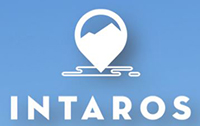
Det Norske Veritas GL (DNV GL) is an independent, autonomous Foundation working to safeguard life, property and the environment. DNV GL comprises 300 offices in 100 countries, with some 8522 employees. DNV GL develops rules and establishes requirements regarding how ships and mobile offshore units are to be constructed. DNV GL shapes the requirements to ensure that quality of the vessels is retained throughout its lifetime. Surveyors ensure that the requirements are met. DNV GL helps customers to increase their client's trust and confidence in them and reduce their business risks by offering management systems, product and personnel certification, verification and business-improvement training services. DNV GL assists in ensuring that the right technology solution for a particular application is found and applied, and also that the technical condition of existing structures and facilities is such that operations are safe and reliable. It helps clients to safely improve their business performance seeking to manage risks within and to those businesses. DNV GL provides its customers in the shipping, offshore and process industries with lifecycle-focused solutions aimed at design, strength assessment, and risk/knowledge management.
DNV GL Research & Innovation promotes and facilitates DNV GL's interdisciplinary knowledge, expertise and technological leadership, secure knowledge sharing across business units, and focus on potential rather than well defined needs. DNV GL Research & Innovation has throughout the years been successful in creating a wealth of knowledge, extreme expertise, grand ideas, and innovative solutions to significant problems for DNV GL and its customers. DNV GL has long traditions in continually reviewing knowledge, ability and technology through R&D activities.
Role in project
DNV GL will in WP6 define end user requirements and ensure that the output from the project has a good understanding and sharp focus for the end users in oil and gas and maritime. Furthermore, novel visualization methods will be developed for the various types of ice-metocean data (WP2), and the DNV GL’s Arctic Risk Map will be employed as the platform for dissemination of project results to relevant stakeholders, in particular those with interests in risk analysis in the Arctic region.
DNV GL AS
Veritasveien 1
1363 Høvik
Norway
